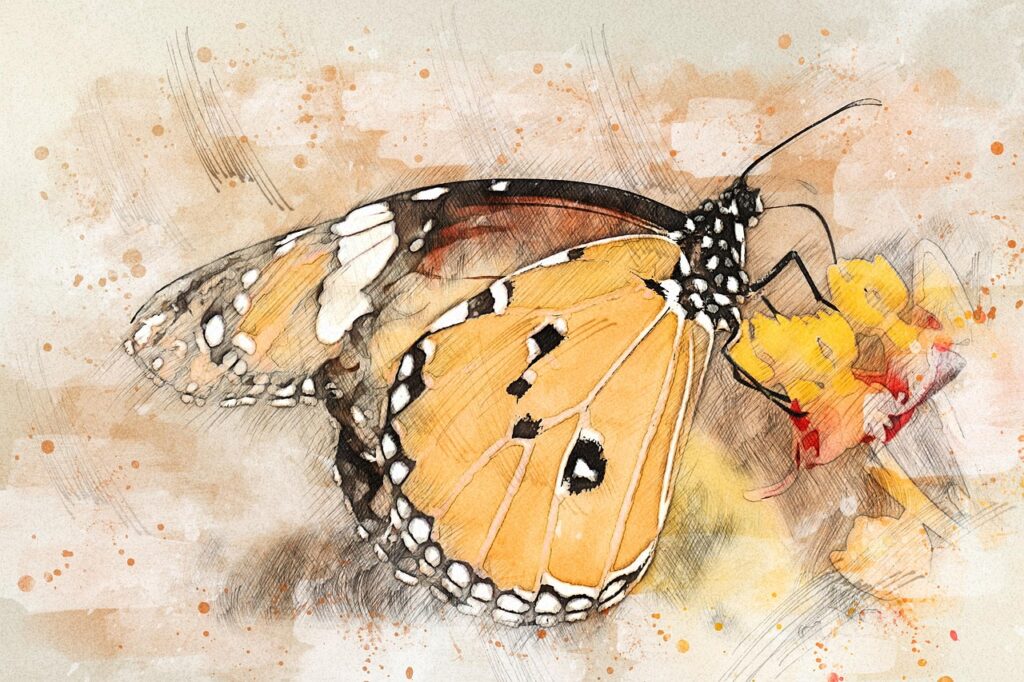Welcome to the real world, where instagram reel trends don’t pay your salaries, Instagram buzz doesn’t fund R&D, and someone in finance is always asking for a spreadsheet. Yet here we are — trying to connect the kaleidoscope of creativity with the cold, hard KPIs of commerce. And surprisingly, when done right, creativity does convert.
This isn’t a love letter to whimsy. It’s a research-backed case for embedding creative strategy at the very heart of business performance. Because the best brands are not just clever; they are built on systems that elevate creative thinking from marketing frill to boardroom necessity.

When creativity is structured, it scales. Growth blooms at the intersection of logic, design, and meaning.
Creativity as Business Infrastructure
Companies outperforming their peers today don’t just “allow for” creativity — they build for it. Deloitte’s Global Marketing Trends survey found high-growth brands are five times more likely to foster creative cultures. Adobe’s Creativity in Business report revealed that 70% of creative-invested firms exceed revenue expectations, while 64% gain market share faster than their peers.
But the nuance is not in simply having “creatives.” The winning edge lies in operationalizing creativity across departments — making it a repeatable, measurable part of how the business runs. Creativity becomes strategic infrastructure: the wiring that shapes how brands ideate, test, learn, and evolve. It’s a supply chain of ideas, where each stage is rigorously optimized for output, impact, and iteration.
Consider how Netflix uses its internal creative review process — where content ideas are greenlit not only on artistic merit but predictive analytics. Or how Airbnb integrated designers into product teams to rethink UX from first principles, eventually redesigning their booking flow for a 16% conversion boost. These aren’t embellishments; they are embedded functions. Creativity is not a garnish — it’s the broth.
Artistry with an Excel Sheet
It’s no longer enough to be memorable. Creativity must also be measurable — and increasingly, that means fitting comfortably within a performance dashboard.
- Nielsen attributes 86% of digital ad sales lift to creative quality.
- Google’s research shows creative execution accounts for 70% of a campaign’s influence on purchase intent.
- WARC links high Star-rated campaigns to long-term brand share growth.
Coca-Cola’s “Share a Coke” personalized label campaign spiked U.S. sales by 2% after a decade of flatlining. Nike’s “Dream Crazy” campaign with Colin Kaepernick boosted online sales by 31%, even as it divided audiences. Spotify Wrapped is now a global benchmark — it’s not just a campaign; it’s a recurring productized ritual that boosted Q4 app re-engagement by 25% in 2023.
The common thread? These campaigns were not whimsical acts of inspiration. They were designed, prototyped, iterated — and aligned to business metrics from the start.
When Viral Becomes Vapid
The temptation to chase cultural currency is real. But in the clout economy, impressions are cheap and intent is scarce.
Asia Bieuville calls this “clout culture” — brands chasing ephemeral online fame at the expense of long-term value. Harvard Business Review warns of “performative innovation,” where the theatre of change takes precedence over meaningful transformation.
Consider how fast-food chains now race to outdo each other with sassy Twitter responses or momentary brand collabs — campaigns that burn bright, then fizzle. For every success story like Wendy’s, there are dozens of forgettable stunts that vanish as quickly as they appeared.
And then there’s Burger King’s infamous “Women belong in the kitchen” tweet, which was meant to promote a scholarship program for female chefs but backfired dramatically, showing how edgy and viral don’t always equate to meaningful.
The real danger lies in the illusion of progress. A trending sound may feel like relevance, but does it move the needle? A viral moment might spike metrics, but does it ladder up to brand equity?
The Architecture of Creative Operations
Sustained innovation is not magical — it’s managerial.
Top-performing companies build creative engines, not one-hit wonders. They operate like product teams:
- Set clear ideation goals (linked to business OKRs)
- Use design sprints to de-risk novel ideas
- Create internal APIs between marketing, product, and data
- Track the ROI of narrative arcs as meticulously as ad spend
These aren’t creative hacks — they’re structural advantages. IBM’s agile squads include UX writers, researchers, and behavioral scientists. Unilever embeds creative exploration into team KPIs. Adobe’s modular content approach resulted in a 23% faster go-to-market for global campaigns and 40% fewer content redundancies.
Netflix’s “Chaos Monkey” approach to resilience testing may seem tech-heavy, but it’s a creative philosophy: break things systematically to see what stands. That mindset — of testing, iterating, and challenging assumptions — is central to creative systems at scale.
Creative Culture Is a Team Sport
The best ideas don’t come from beanbags. They come from structured friction — when data meets emotion, when logic meets imagination.
IDEO’s model for innovation emphasizes three things: storytelling, rapid prototyping, and critique. Pixar institutionalizes this through its “Braintrust” — a regular ritual of candid feedback across teams.
Modern CMOs assemble teams not just of marketers, but AI trainers, behavioral economists, content strategists, and product designers. Because brand-building isn’t a linear funnel anymore. It’s a web of interconnected experiences.
Patagonia’s “Don’t Buy This Jacket” campaign was controversial, but it reflected the brand’s systemic values and sparked a conversation that reinforced customer loyalty. LEGO’s open innovation approach — from user-submitted sets to the LEGO Ideas platform — builds advocacy by decentralizing creativity.
Design Thinking for the Creative CMO
Imagine if creativity were treated like product design. That’s what leading CMOs are doing:
- Empathize – Start with real user insight.
- Define – Frame the right business problem.
- Ideate – Encourage divergent thinking before converging.
- Prototype – Test messaging, visuals, and UX flows early.
- Test – Collect both qualitative feedback and quantitative signals.
Procter & Gamble applies this method across product marketing, resulting in faster pivots and fewer failed launches. Airbnb redesigned entire landing flows after realizing their most booked homes weren’t the ones shown first — a classic empathy gap fixed through design logic.
Strategic Innovation in Practice: Microsoft, BYD, Figma & Perplexity

Creativity isn’t a moment — it’s a metamorphosis. When design systems take flight, transformation becomes inevitable.
Microsoft’s Copilot isn’t just about adding AI. It’s redefining how work gets done. Their enterprise studies show 25% onboarding acceleration, 353% ROI for SMBs, and 4% enterprise-level revenue boosts through strategy augmentation.
BYD’s Blade Battery system — capable of passing nail penetration tests without combustion — reimagines battery safety at a time when EV fires are headline risks. More impressively, BYD’s partnership with LEGO to recycle 230M+ bricks highlights sustainability as a layered creative strategy, not a side note.
Figma transformed from a design tool into a collaboration operating system. Their multiplayer editing allowed over 80 designers across Fynd to work in real time, boosting productivity by 30% and aligning multi-product releases.
Perplexity AI’s source-verified architecture challenges the flashy, hallucination-prone models of the chatbot arms race. Instead of chasing personality, it delivers accuracy — a rare creative decision in the age of viral AI.
Takeaway: Creativity doesn’t always shout. Sometimes it’s the quiet decision to go deeper, not wider.
Beyond the Boardroom: Creativity as Leadership Capital
Creative fluency is emerging as a core trait of effective leadership. McKinsey’s research on “The Mindsets of Innovators” highlights cognitive empathy, strategic intuition, and risk-tolerant resilience as drivers of business transformation.
CEOs like Satya Nadella and Reed Hastings aren’t just tech visionaries; they are curators of creative culture. Nadella’s mantra of “growth mindset” reframed Microsoft’s culture from control to curiosity, unlocking new product categories and reviving team morale.
Netflix’s internal “test and learn” philosophy gave birth to now-iconic originals like House of Cards, based on predictive insights rather than creative hunches alone. Strategy and creativity, when interlaced, create compounding outcomes.
Final Word for the Modern CMO
Creativity is not your TikTok intern’s job. It’s your growth engine.
The best CMOs today are not storytellers alone — they are orchestrators. They build systems for idea flow, protocols for testing, and frameworks for scale. They understand that originality is not a spark. It’s a system.
As Microsoft’s Copilot ROI study notes: “Running businesses without AI tools will soon resemble using typewriters in the computer age”.
Brands that embed creative thinking as infrastructure — not entertainment — will be the ones that endure.
If you’re a CMO looking to future-proof your function, start here:
- Audit where creativity lives (and where it’s missing)
- Create a design ops model for marketing
- Treat your narrative like a product: ship, test, iterate
- Identify and reward creative behaviors, not just creative outcomes
- Make space for strategic experimentation — with constraints
This isn’t about being clever. It’s about being unignorable.
Research supported by Perplexity AI. Written with editorial assistance from ChatGPT.
